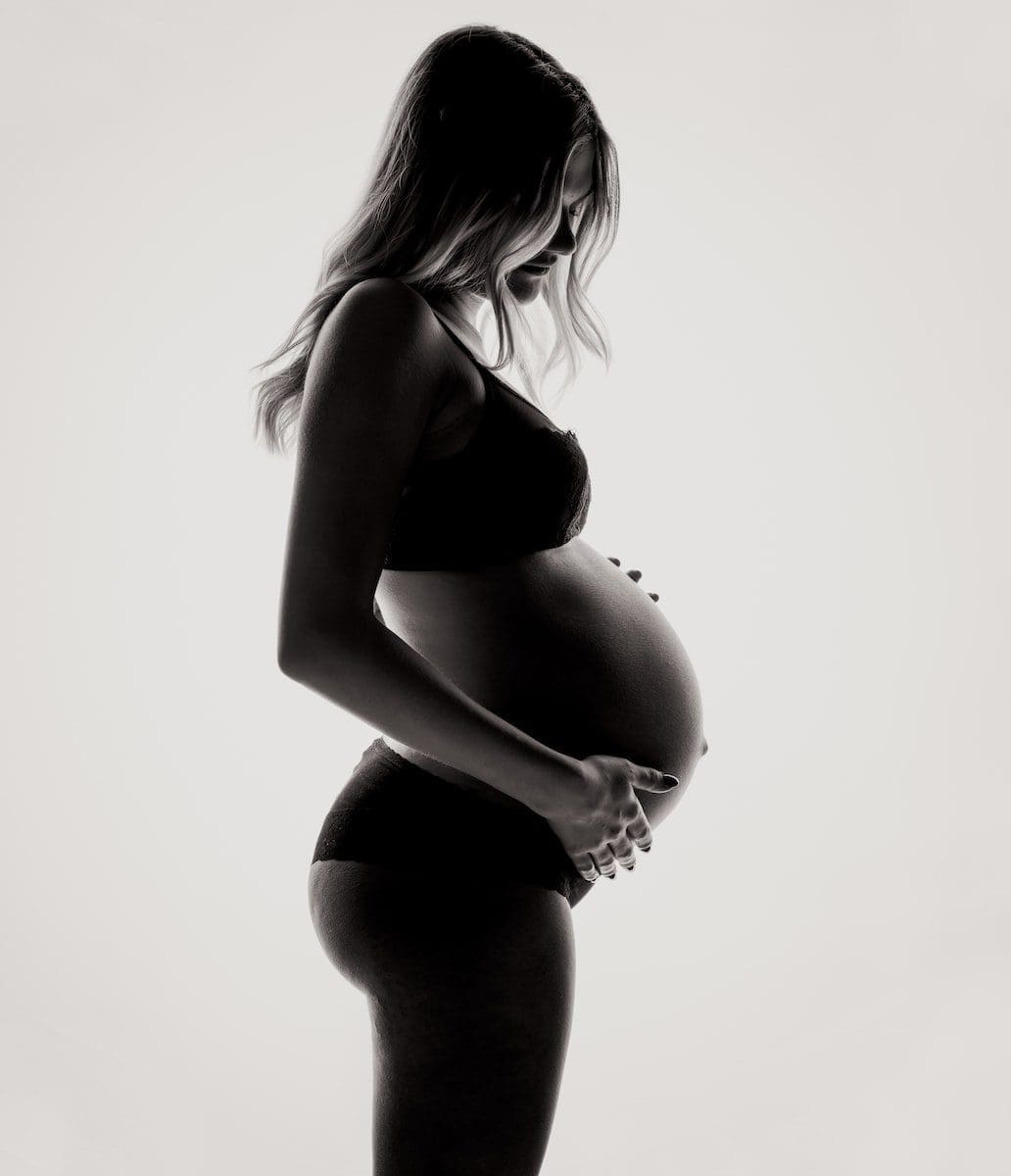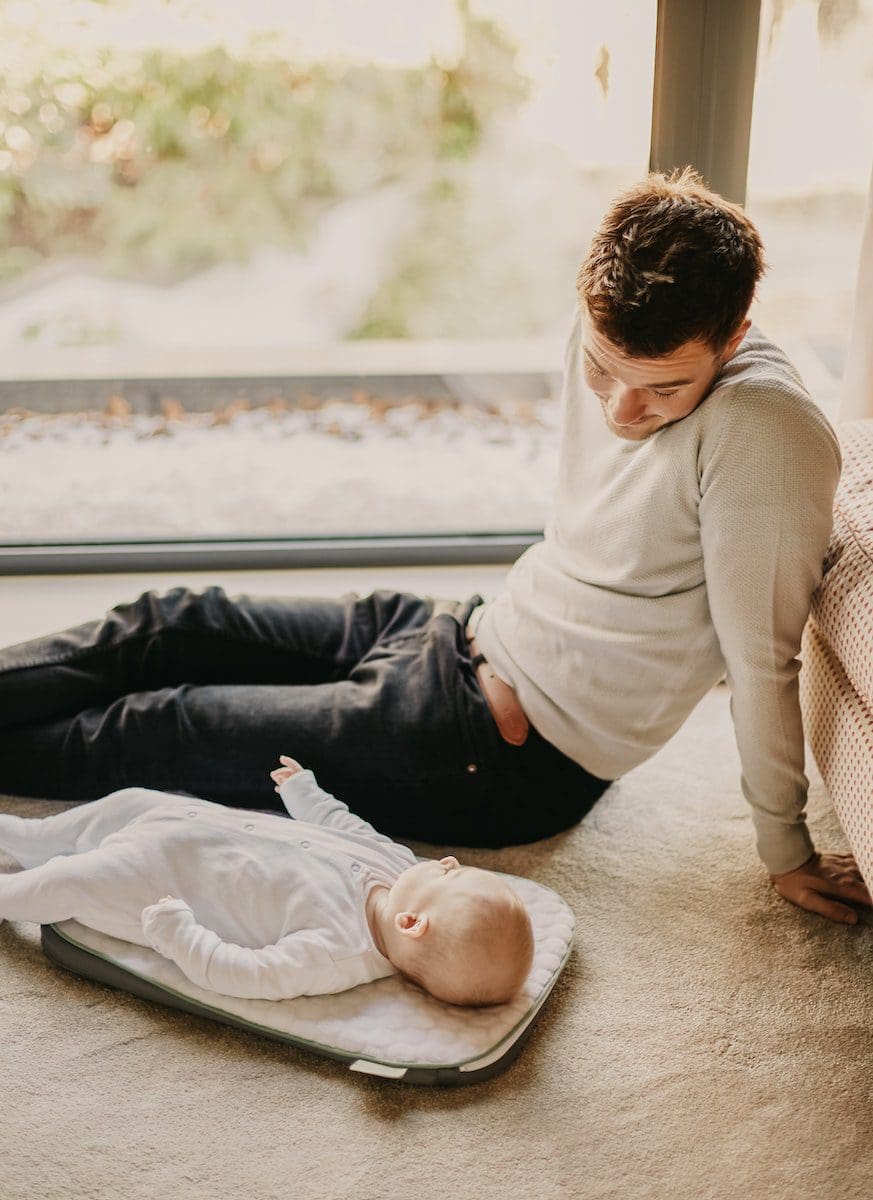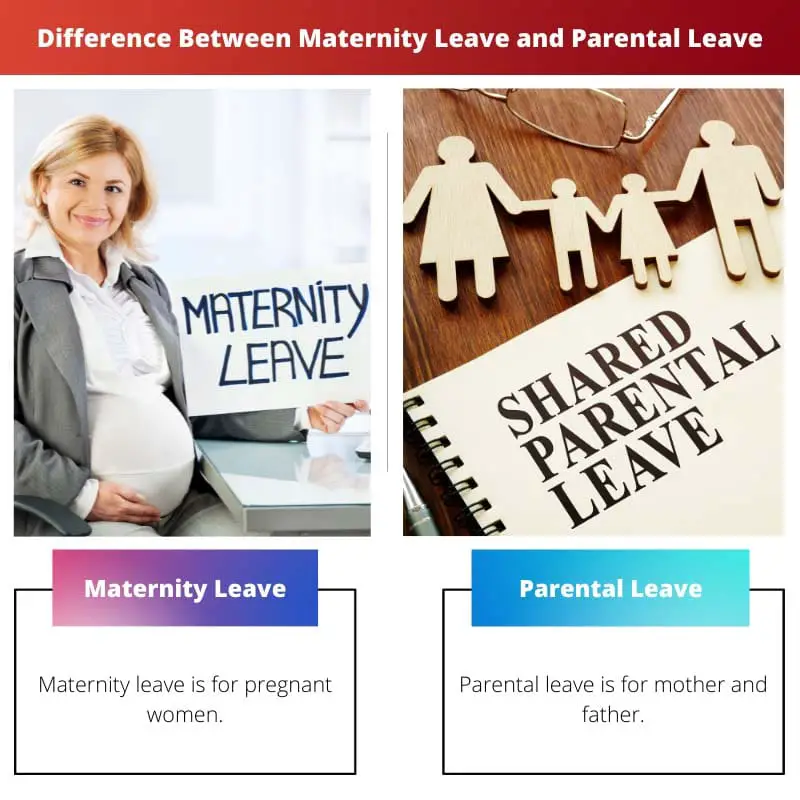There are distinct types of leave taken by the employees. For some furlough employees are gets paid. Both maternity leave and parental leave are taking care of the newborn child.
Maternity leave is allowed only for female employees, and parental leave is allowed for both male and female employees.
Key Takeaways
- Maternity leave is specifically for mothers who have given birth, while either parent can take parental leave.
- Maternity leave is shorter than parental leave, varying depending on the employer and country.
- Some countries mandate paid maternity and/or parental leave, while others do not.
Maternity Leave vs Parental Leave
Maternity leave is a period of paid leave that is granted to pregnant women. The duration of this period can last up to 26 weeks. Paternity leave is an employee benefit that grants leave for a parent to care for their newborn. It is an unpaid leave for a mother or father that lasts up to 65 weeks.

Maternity leave is for pregnant women who are employed. You have the right to take off or work part-time. Every woman working in the office is allowed to take maternity leave despite their experience.
Generally, maternity leave is not paid, but you get benefits by applying for insurance. The maximum period for maternity leave is 12 months. Maternity leave comes under parental leave.
The women who undergo a miscarriage also have the same benefits.
Parental leave can be taken by the mother and father. If it is without pay, then it is unpaid. Some organizations provide paid parental leave.
Parental leave differs from parental leave for childbirth and parental leave for adoption. The mothers may take the combined maternity and parental leave together for their health issues.
The parental leave must end 72 weeks after the child’s birth.
Comparison Table
| Parameters of Comparison | Maternity Leave | Parental Leave |
|---|---|---|
| Who takes the leave | Maternity leave is for pregnant women. | Parental leave is for mother and father. |
| Leave before delivery | Maternity Leave starts 16 weeks before the expected date of delivery | The parental leave is on the week when the child is born. |
| Leave after delivery | Maternity leave ends 20 weeks after the childbirth | Parental leave ends 78 weeks after the childbirth |
| Length of leave | It takes 18 continuous weeks | It takes 65 continuous weeks |
| Paid and unpaid leave | Maternity leave is paid for 26 weeks | Parental leave is unpaid. |
What is Maternity Leave?
Maternity leave is for pregnant women who are employed. In 1911, the child-bearing pain of women was recognized. The UK is the first country to introduce maternity leave through the Employment Protection Act.
Finland offers the lengthiest maternity leave in the world. The employer is aware of the legislation about maternity leave for women. The countries have distinct benefits for maternity leave.
Every woman is allowed these maternity benefits as child-bearing is a profoundly burning process that may even cause some physical injury to the woman or severely reduce her productivity and efficiency.
If the employer fails to recognize the maternity period for his female employee, then he is sentenced to prison for at least three months. And also pay the fine of three thousand rupees.
The underlying objective of such motherhood benefits is to protect the importance of Motherhood. It is essential to provide complete health care to the woman when she can not perform her duties.
The economic independence and self-reliance of a female employee by protecting her from any possible subjugation and discrimination while she savours the most splendid natural phenomenon of being a mother are the rights of every woman.

What is Parental Leave?
Parental leave can be taken by the mother and father. Representative Patricia Schroeder (D-CO) is an organization that introduced parental leave in 1985.
Parental leave is when the employee takes off from work to take care of their children without pay. It is called a job-protected leave for parents who are employed.
Every country has its own rules and regulations for parental leave. Some countries denote parental leave as non-transferable leave.
Unlike maternity leave, parental leave is a family right. Both the mother and father have the right to take parental leave. Entitlements may consist of a mixture of family and individual rights.
In some countries, maternity leave comes under parental leave. The parental leave is called home care, and an extension is also available for the parental leave.
Some countries provide paid parental leave to increase the take-up rate. Gender discrimination can make it equal to both the mother and father.
Proper notice of request must be given before taking the leave. Employees can take up to four weeks per year out of the 18-week entitlement as parental leave unless their employer agrees to a longer period.
The employer has the right to postpone the request on business grounds for up to six months. Parental leave includes pay and benefits.

Main Differences Between Maternity Leave and Parental Leave
- Maternity leave is for pregnant women, and parental leave is for mothers and fathers.
- Maternity Leave starts 16 weeks before the expected date of delivery, and the parental leave is on the week when the child is born.
- Maternity leave ends 20 weeks after childbirth, and parental leave ends 78 weeks after childbirth.
- Maternity leave takes 18 continuous weeks, and parental leave takes 65 continuous weeks.
- Maternity leave is paid for 26 weeks, and parental leave is unpaid.




